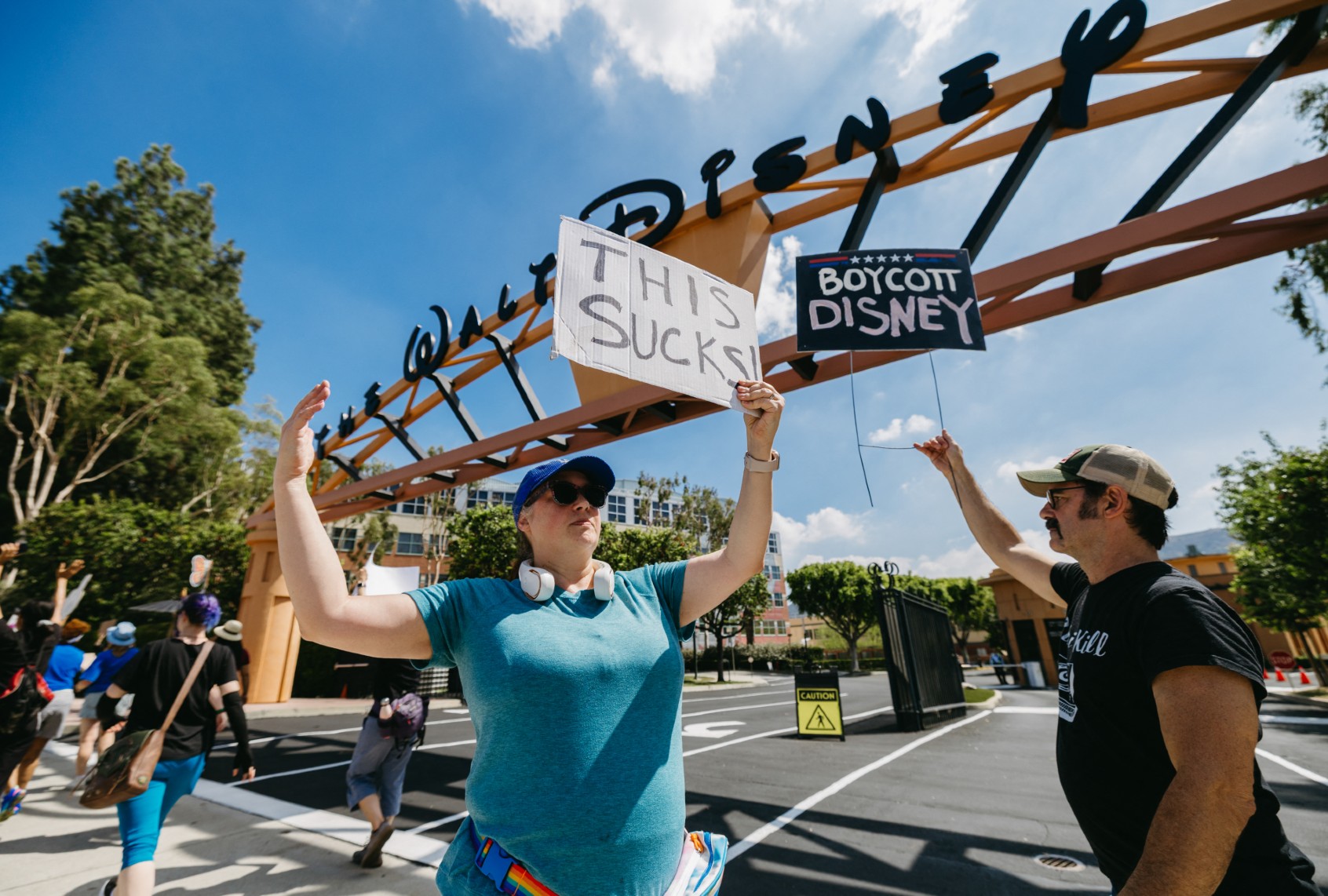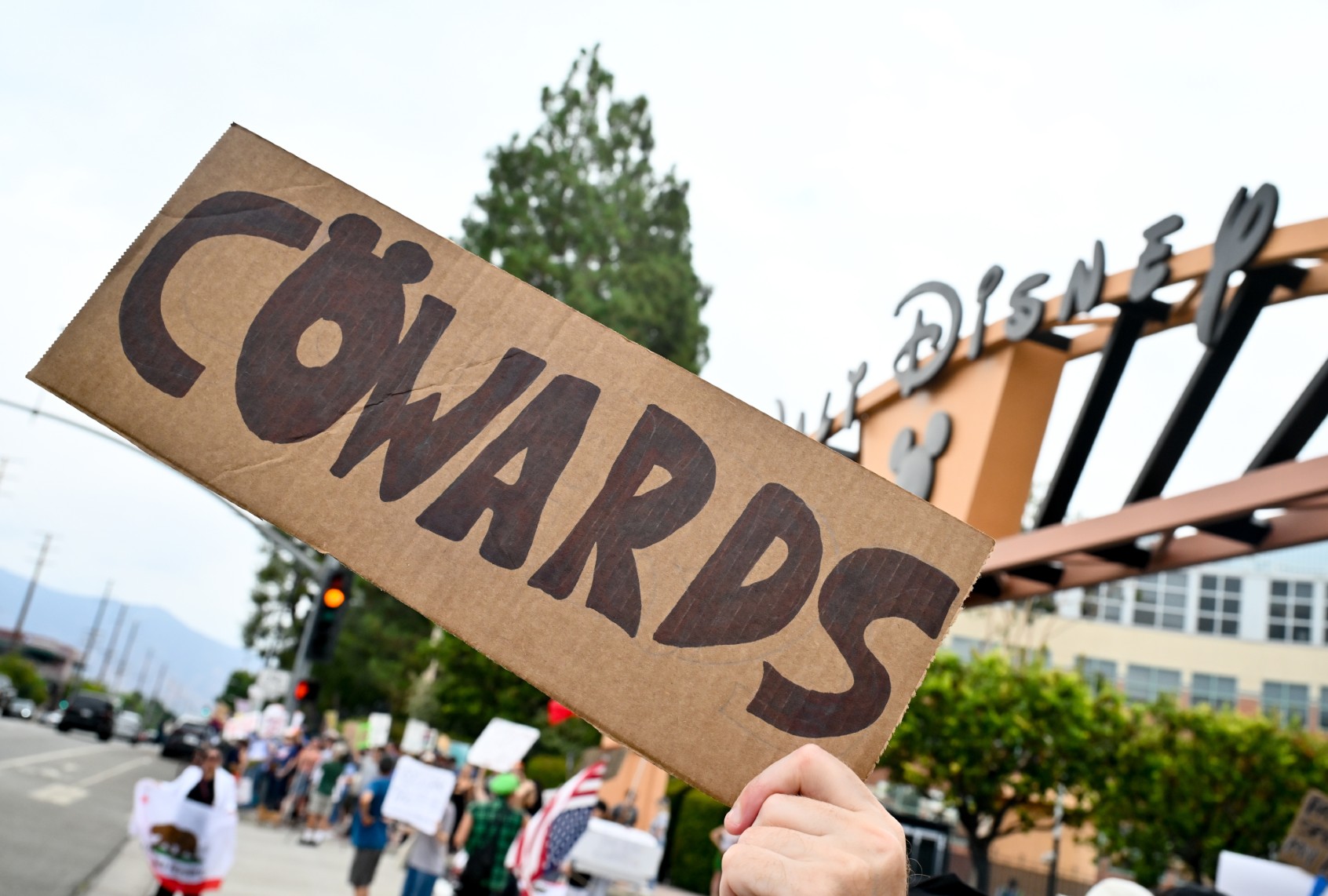[ad_1]
So-called Disney adults don’t get a ton of respect in the internet streets. Despite the fact that Walt Disney always intended for Disneyland to be a place where children and adults alike could find magic, a full-grown person who spends all their vacations at Disney properties, decks out their workspace with Disney figurines and memorabilia, or gets married in a Cinderella-themed wedding at Disney World is going to encounter some judgment. Maybe a lot of it. (I’ve certainly been guilty of judging, once turning away a prospective housemate because I refused to have Disney princess curtains in my apartment’s bay window.) But pre–social media, the Disney adult was rarely spotted in the wild outside an actual Disney property. But various platforms all seem to save an evergreen derision for them: a quick Reddit search calls up an array of posts with titles like “Disney adults are a plague” and “Why do Disney adults exist?”
The Disney adults who put out the mouse signal showed their collective power — not one of fealty to a corporation, but of belief that free speech was part of the magic in the Magic Kingdom.
But Disney adults stood out among the groups exerting pressure on the behemoth company after CEO Bob Iger caved to the demands of Donald Trump and his FCC attack dog to pull “Jimmy Kimmel Live! from the broadcast lineup of its main television subsidiary, ABC. Iger’s capitulation to the world’s weakest strongman was uniformly unpopular. Swift and scathing blowback came from all directions: top Hollywood talent agents, entertainment-industry unions, a group of more than 100 former ABC News journalists and even Iger’s Disney predecessor, Michael Eisner.

(DAVID PASHAEE/Middle East Images/AFP via Getty Images) Protesters display signs reading “This Sucks” and “Boycott Disney” outside the Walt Disney Studios in Burbank, Calif., on Sept. 19, 2025, during a demonstration against ABC’s suspension of Jimmy Kimmel Live!
It was the speedy mobilization of Disney customers, however, that showed investors just how much the megacorp stood to lose if Iger stood by his decision. The days following Kimmel’s firing found Disney stock sinking fast, resulting in a market loss of about $4 billion within a few days. In a Sept. 23 Guardian postscript, former Secretary of Labor Robert Reich wrote that while “there’s never one single reason for the ups and downs in the value of a particular firm’s shares of stock . . . the timing here has been almost exact.” The people who ended up showing Iger the depth of his mistake, crashing Disney servers with wave after wave of Disney+ and Hulu subscription cancellations, weren’t necessarily going to the mattress for Kimmel himself, but for free speech; in doing so, they highlighted the remarkable cowardice shown in recent months by supposed industry leaders and innovators. And the Disney adults who put out the mouse signal showed their collective power — not one of fealty to a corporation, but of belief that free speech was part of the magic in the Magic Kingdom. The image of one TikTok creator brandishing a copy of Timothy Snyder’s “On Tyranny” while sitting in front of a wall of Minnie Mouse might be one of this chapter’s most indelible.
As a nation of consumers, Americans have always fought with our wallets. In the years since 1996’s Telecommunications Act, which gave corporations more or less unchecked power to buy up independent publishers, regional TV and radio broadcasters, and local news outlets, nearly every media brand in the nation has been owned by a total of three or four multinational conglomerates. Collective protest has been complicated by consolidation, franchising and acquisitions, making it ever more difficult to even figure out who to protest and how. Recent decades have seen brands like McDonald’s, Starbucks and Amazon prove to be functionally boycott-proof. The Kimmel affair was a rare moment of megamedia vulnerability — and given who started the whole fuss, there’s more to come.
Brands, cable networks, streaming services, social platforms, and beyond — it often feels like there’s just too much of everything, and too many consumers are confined to individualized silos of media and pop culture, making it difficult to attain the mass attention and consistent signaling that effective protest requires. America’s most successful consumer boycotts have had a single target, a united body, and a straightforward tactic — a trajectory that could result in transformative change. Alabama’s landmark Montgomery Bus Boycott forced a bus company to see that segregation was bad for business. Labor activist Cesar Chavez convinced Americans to stop buying table grapes for several years by showing them that a small sacrifice for families led to better lives for farm workers. The end of apartheid in South Africa was made possible by consumer pressure from all sectors, from food to music to international sports. In the pre-internet 1990s, photojournalistic exposés of the child and sweatshop labor used to make Nike products put a harsh spotlight on the brand and made an irrefutable connection between Western consumer culture and the exploitative working conditions that made their sneakers and soccer balls possible. The more consumers could see how the sausage was made, the more leverage they had in an expanding marketplace where choosing between brands was often a matter of which one was more transparent about their business and supply-chain practices.

(Michael Buckner/Deadline via Getty Images) WGA members at Protest ABC For Comedy, Criticism, and 1st Amendment on September 18, 2025 in Burbank, California.
America’s most successful consumer boycotts have had a single target, a united body, and a straightforward tactic — a trajectory that could result in transformative change.
In the Internet 2.0 era, social-media boycotts could take advantage of its immediacy and reach to have some effect. In 2012, the new director of Susan G. Komen For the Cure, the nation’s largest breast cancer charity, severed its longstanding affiliation with Planned Parenthood — essentially using abortion provision as justification for cutting off low-cost cancer-detection screenings to millions of women. Politicians and erstwhile Komen donors quickly mobilized, as did the feminist blogosphere. Word was spread through a variety of platforms, email lists, and petitions to spread the word and underscore, via personal testimony, how much non-reproductive healthcare Planned Parenthood made possible; Komen reversed its decision to defund PP within a week. Several years later, Donald Trump’s sexist rhetoric activated some of the same audiences: After the release of the Access Hollywood tape where Trump’s “grab them by the p***y” brag originated, the hashtag #GrabYourWallet fomented a multi-target boycott of companies that led, among other things, to the end, in 2018, of Ivanka Trump’s eponymous clothing line.
Start your day with essential news from Salon.
Sign up for our free morning newsletter, Crash Course.
As the social-media landscape became more polarized and outrage driven, right-wing fury at a “wokeness” that was never quite articulated led to performative destroy-cotts where MAGA followers smashed, shot, and ran over products like Keurig coffee machines (after the company pulled advertising from “Hannity”) and Nike products (after the brand tapped Colin Kaepernick as a spokesperson). Beyond the incoherence of destroying an item that was already paid for, demonstrations like these had little impact on the brands themselves. Nike saw a dip that quickly un-dipped, while Keurig’s sales remained steady. Most important, though, was that protests like these came to the conclusion that all PR is indeed good PR — which kicked off an era of advertising specifically meant to ignite a culture war. (To wit: American Eagle’s “great jeans” ads, engineered to hook X users, activated by any chance to trigger the libs.)
The Disney boycott worked because it was grounded in a monoculture that continues to shrink, offering fewer and fewer opportunities to capture American attention at scale: Everyone has some Disney in their lives; memory and magic are integral to the brand. This isn’t the case for, say, Target — also part of the monoculture, but one where boycotts over Pride merchandise, abandonment of DEI measures, and marked disinterest in retaining Black shoppers intersect with an overall decrease in customer experience. One person’s refusal to buy from a corporation bending the knee to Trump is another’s hard no on shopping anywhere that keeps half the stock locked behind plexiglass.
The age of conglomeration is designed to keep ever bigger buffer zones between owners and workers, buyers and sellers. Consumer silos constructed by algorithms keep users engaged but not connected, filled with FOMO but primarily parasocial. Community, on the other hand, is the element that makes boycotts most effective. In the course of making a very bad, legacy-defining choice, Disney managed to strengthen at least one of them.
Read more
about consumer boycotts
[ad_2]
